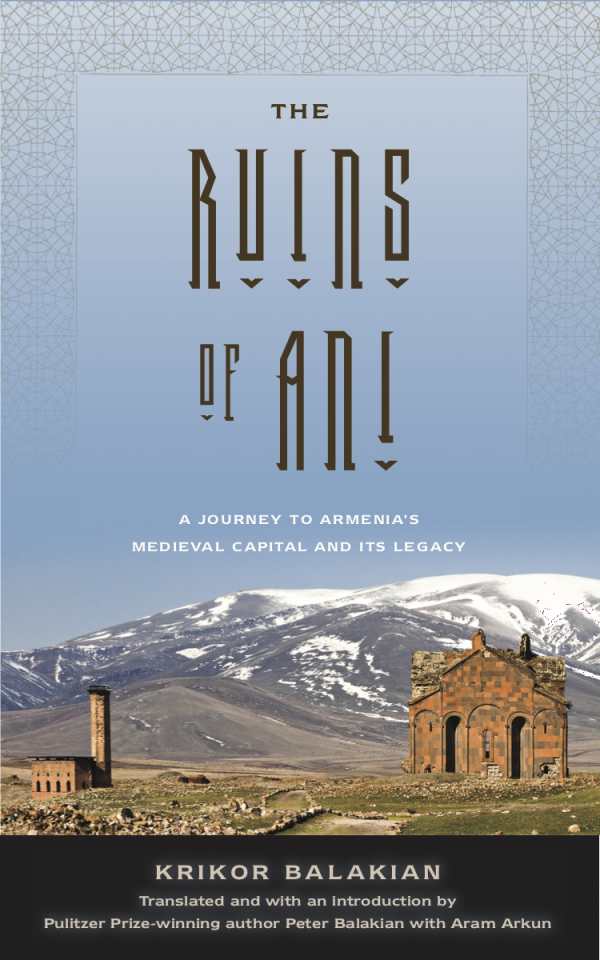The Ruins of Ani
A Journey to Armenia's Medieval Capital and Its Legacy
Father Krikor Balakian’s memoir of his 1909 visit to the medieval Armenian city of Ani is newly available in English as The Ruins of Ani. Translator Peter Balakian highlights the historical importance of this text, which documents architectural and cultural details of structures that were largely demolished in the Armenian genocide.
Armenia’s complex, traumatic history is cogently summarized in Peter Balakian’s introduction. Ani was a walled city founded in 950 CE as the seat of the Bagratuni dynasty and housed many resplendent churches. However, it was shortly conquered by a series of invaders and by the sixteenth century was abandoned. When Krikor Balakian visited, Ani’s ruins were part of the Russian Empire and served as an archaeological site, museum, and pilgrimage site. Several years later, the museum and site were ravaged by warfare, so his monograph records artifacts which are no longer there.
The introduction notes how important Ani is as an Armenian symbol of autonomy and cultural renaissance—a bright spot in a history of persecution and massacres. Ani is now on Turkish soil, just over the closed border with the Republic of Armenia, and is a UNESCO World Heritage site with limited stabilization and restoration efforts. Peter Balakian condemns the Turkish government for eliminating Armenian identity in signage and maps and ignoring its potential as a “place of cultural and political negotiation.”
Krikor Balakian’s rhapsodic narrative is a scholarly, flowery mix of architectural history and a travelogue of his much-anticipated pilgrimage. He writes lovingly about church ornamentation and holy day services held among the architectural ruins; he also thunders against bloodthirsty marauders and unworthy, greedy priests in Armenia’s past. The text is accompanied by numerous richly toned photographs of Ani’s dramatic ruins, which are critical evidence of lost history.
In 1910, the book beckoned the Armenian diaspora to become aware of and help finance restoration of its cultural heritage. With this translation, it should not only reach a much larger audience but point the way toward a more truthful account of Ani’s history.
Reviewed by
Rachel Jagareski
Disclosure: This article is not an endorsement, but a review. The publisher of this book provided free copies of the book to have their book reviewed by a professional reviewer. No fee was paid by the publisher for this review. Foreword Reviews only recommends books that we love. Foreword Magazine, Inc. is disclosing this in accordance with the Federal Trade Commission’s 16 CFR, Part 255.

